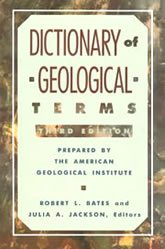Geological Terms Beginning With "U"
For terms beginning with other letters, please click below
|


Ultrabasic Rock
An igneous rock with a very low silica content and rich in minerals such as hypersthene, augite, and olivine. These rocks are also known as ultramafic rocks. Examples include: peridotite, kimberlite, lamprophyre, lamproite, dunite, and komatiite. Shown in the photo is a specimen of peridotite.

Ultramafic Rock
An igneous rock with a very low silica content and rich in minerals such as hypersthene, augite, and olivine. These rocks are also known as ultrabasic rocks. Examples include: peridotite, kimberlite, lamprophyre, lamproite, dunite, and komatiite. Shown in the photo is a specimen of peridotite.
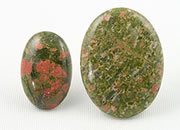
Unakite
Unakite is a pink and green metamorphic rock composed of pink orthoclase, green epidote, and colorless to milky quartz. It is formed when granite is altered by metasomatism, and the plagioclase of the granite is transformed into epidote. Unakite is used as a construction material, an architectural stone, a lapidary rough, and a gem material.

Unassociated Gas
Natural gas that is found in a reservoir that does not also contain an accumulation of crude oil. Contrast with associated gas.
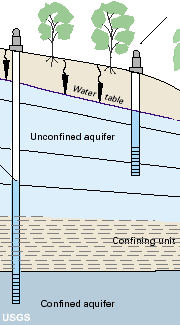
Unconfined Aquifer
An aquifer that is not overlain by an impermeable confining unit and has a porous connection to the atmosphere through which it can receive recharge. In the image at left, the well on the right penetrates an unconfined aquifer. The water level in the well is the same as the water level in the surrounding aquifer.
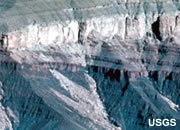
Unconformity
A contact between two rock units of significantly different ages. An unconformity is a gap in the time record for that location. Shown in the photo is a section of "The Great Unconformity" of the Grand Canyon.
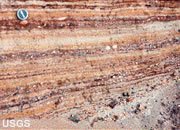
Unconsolidated
A term used when referring to sediment that has not been compacted, cemented, and lithified into a rock. The photo shows layers of sand and gravel in an unconsolidated alluvial deposit in North Dakota.
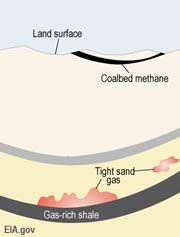
Unconventional Oil and Gas
Crude oil and natural gas that do not readily flow into a drilled well because the rock units in which they are contained either lack the porosity and permeability to allow the oil and gas to flow, or, the oil and gas are adsorbed onto or bound within the grains of the rock.
Unconventional oil and gas are produced from shale, tight sands, and coal beds, where liberating the oil and gas from the rock and moving it to the well are the challenges. These rock units must be stimulated by techniques such as hydraulic fracturing, horizontal drilling, steam flooding, injection of water, injection of carbon dioxide, or pressure reduction.
Unconventional oil and gas and conventional oil and gas do not differ in their chemical composition. They differ in the type of rock unit from which they are produced. Compare to "conventional oil and gas."

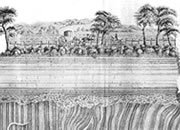
Uniformitarianism
A basic geologic principle. Processes that act upon the Earth today are the same processes that have acted upon it in the past. "The present is the key to the past." Shown in the photo is James Hutton's unconformity at Jedburgh, which he used as an example of the principle of uniformitarianism.

Unit Cell
The smallest sample of a substance that has a complete representation of its atomic structure. A crystal structure is formed by repetition of the unit cell in three dimensions. The image shows a unit cell of the mineral halite (NaCl).

Uplift
A structurally high area of Earth's crust. Formed by movements that bend the crust into a structure such as a dome or an arch. A structurally high area can also be caused by subsidence of adjacent lands. Shown in the image is the Black Hills Uplift which is bounded on one side by the Powder River Basin and on the other by the Williston Basin.
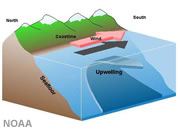
Upwelling
Movement of cold water from the floor of a lake or ocean up into a shallow area.
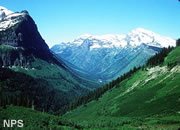
U-Shaped Valley
A deep valley with a flat floor and very steep walls. Shaped in cross section like the letter "U." Valleys with this geometry are frequently cut by a glacier. In the photo is McDonald Valley, cut by a glacier and located in Glacier National Park, Montana.
|
Dictionary of Geological Terms - Only $19.99 All scientific disciplines have an essential vocabulary that students and professionals must understand to learn and communicate effectively. A geology dictionary that is used regularly is one of the most important tools for developing professional competence. A good dictionary should be on the desk of every geologist and within easy reach. This dictionary is compact and inexpensive at only $19.99. More information. |
|
| More General Geology |
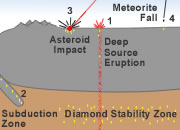 |
Diamonds from Coal? |
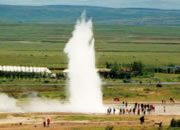 |
What is a Geyser? |
 |
What is the San Andreas Fault? |
 |
Igneous and Volcanic Features |
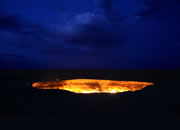 |
The Doorway to Hell |
 |
Topo Maps |
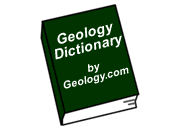 |
Geology Dictionary |
 |
Gifts That Rock |

Find Other Topics on Geology.com:

|

| ||

|

| ||

|

| ||

|

|

